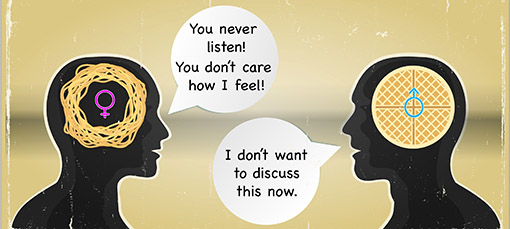By Jill Long
As women, we tend to expend a lot of energy taking care of other people and things, from our homes to our children, parents, and friends. Women typically take on the care-taker role and may forget to take care of themselves. With the holidays quickly approaching, and the extra demands that go with them, it may be time to figure out where we fit in this picture. “Deserved selfishness” is not just a habit to practice this time of year, but to be practiced throughout the year.
We may place ourselves last on the list and since the list is never-ending, we may never get the time we deserve. Sometimes, even if we plan time for ourselves, we may find ourselves sacrificing that time to do something someone else wants or needs us to do. It seems so easy to break a promise of time for ourselves but we would never think of missing an appointment or commitment to someone else. Why is the appointment with someone else more important than one with yourself?
Maybe it’s time to take a look at where we place ourselves on the list and practice some “deserved selfishness.” We are all taught from an early age not to be selfish. We are asked to share our toys, let others’ take their turn, or share a room with a sibling. Maybe we need to take a look at our definition of “selfish”. Maybe we think that taking care of ourselves is being selfish. The definition of selfishness is being overly concerned with self to the detriment of others. So being selfish means I shouldn’t do something for myself that can make someone else’s life harder, not that I shouldn’t sometimes put myself first. So why do we feel we are being selfish to take care of ourselves?
I think that maybe a more appropriate term for what we do is called “self-sacrificing.” Self-sacrificing is giving up oneself for the benefit of others. If we are self-sacrificing, we may tend to be angry, depressed, anxious, or tired because we are not nourishing ourselves or our souls. Furthermore, we lose sight of who we are. Ongoing self-sacrificing will make us sick, either physically, mentally, or both. There is not a medical description for this kind of sickness, but I believe that ongoing self-sacrifice manifests itself in illness. We are not nourishing our mind, body, or spirit when we give up ourselves for the benefit of others.
If we have to have a term to describe putting ourselves first, can we agree to look at it not as selfishness but as “deserved selfishness?” Can we use the term “deserved selfishness” to mean taking care of oneself so that we have the physical, mental, and emotional energy to care for others? We do not have to feel guilty or bad about taking care of ourselves and should not feel selfish when we do so.
Some have self-sacrificed so long, raising children or caring for elderly parents, that we do not know how to take care of ourselves in a way that replenishes us. We may be able to sleep and feel rested, but we cannot re-energize our souls solely with sleep. We need time to self-reflect, relax and take care of our body’s physical, mental, emotional, and spiritual needs.
What have you purposefully done for yourself lately? When was the last time you set your intention to do something that replenishes you? So many people say, “I don’t have time,” but if you truly look at the time you have, you can create time for “deserved selfishness.” Make an appointment with yourself, don’t allow yourself to cancel it, and don’t allow someone else to take priority over it.
“Deserved selfishness” is most helpful if practiced regularly. We need to give ourselves time to re-energize on a daily basis. Different types of personalities need varying amounts of time to re-energize the mind, body, and spirit. You are the best judge of how much time and how often it takes to feel more connected and refreshed. Again, this is not about sleep. So how do you figure out your own dynamic with “deserved selfishness?” Start with making a list of things you like to do. If you have a hard time thinking of these things, because it’s been so long since you took time for yourself, think of what you used to enjoy or what you see in others’ enjoyment. Practice giving yourself the time to do these during the week. Have things on your list that only take a few minutes as well as things that take a few hours, or day. Give back to yourself according to what makes you feel better. Also start a list of things you’d like to do but haven’t tried yet. Start a new hobby, reach out and do volunteer work, or stay home and read a book. Think of what you enjoyed as a child and expand on that.
I encourage you to include exercise in these lists. It doesn’t have to be the latest trend, but something you enjoy that moves your body. Exercise is a good way to create new energy and provide “deserved” time for yourself. Gentle exercise could include going outside for a brisk walk. Being in nature is a truly grounding activity, and feeling grounding is a necessary part of self-care. Whatever activity you choose, do it with purpose. Set an intention that this activity will be meaningful, fulfilling, and empowering. “Deserved selfishness” can become a way of life if you accept it as time to reflect, re-energize, refocus, and relax. In doing so we can be more present with others, feel less stressed, and be healthier.
Jill Long, M.A. Ed.
Licensed Professional Counselor




